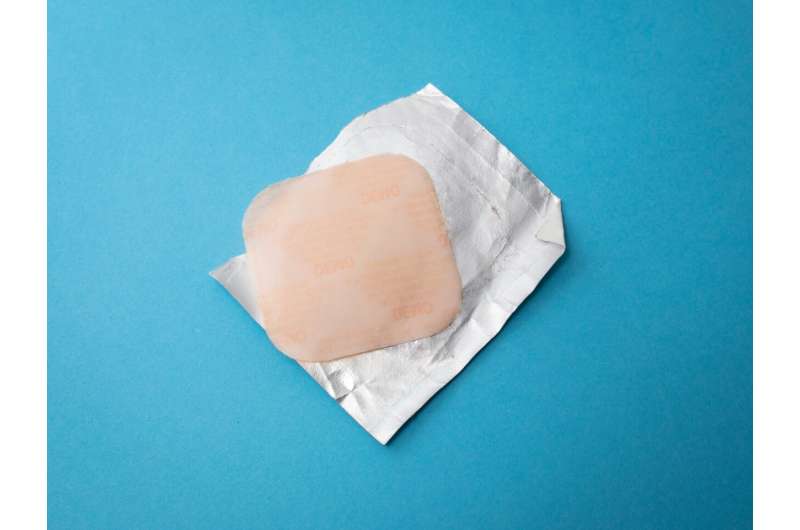Do Wellness Patches Really Work? How to Differentiate Between Effective and Ineffective Products

Discover how wellness patches work, their effectiveness, and tips to identify credible products. Learn the science behind skin delivery and what to watch for when choosing wellness patches.
From sleep aids and stress relief to vitamin supplementation and energy boosts, wellness patches are increasingly popular in today's health and wellness market. These adhesive patches are marketed as a convenient way to deliver nutrients and herbal compounds directly through the skin into the bloodstream—eliminating the need for pills or injections.
While the concept sounds scientifically plausible, especially considering known medical patches used for hormone delivery or nicotine replacement, the effectiveness of wellness patches varies greatly. The skin acts as an effective barrier, mainly composed of the stratum corneum, which is like a brick wall made of dead skin cells and a waxy lipid matrix. This structure impedes the passage of most water-soluble and large molecules, meaning only certain small, fat-soluble molecules like nicotine, estradiol, or specific pain medications can naturally penetrate the skin.
This barrier explains why some patches, such as nicotine patches, are effective—they contain small, lipophilic molecules capable of crossing the skin's defenses. Conversely, nutrients like vitamins B12, magnesium, and iron, which are water-soluble and larger molecules, generally cannot deliver meaningful benefits via patches alone.
To assess the credibility of a wellness patch, scrutinize its active ingredients. If it contains small, fat-soluble compounds like melatonin or caffeine, there is at least a theoretical prospect of absorption. However, larger or charged molecules (e.g., B12, magnesium salts) are unlikely to pass through unless with specialized delivery technology.
Transparency regarding dosing and delivery mechanism is also crucial. Reliable patches specify the amount of active ingredient, the duration of delivery, and the release rate. Be cautious of vague claims involving only natural infusions without detailed ingredient or mechanism explanations.
The technology behind effective patches often employs matrix or reservoir systems that control how the active compounds are released. Modern patches may include chemical enhancers like oleic acid or alcohols that temporarily loosen the lipid barrier, promoting better absorption. Nicotine patches exemplify this technology well.
Despite the science, much of the market for wellness patches is driven by marketing rather than solid evidence. Many products lack independent research or peer-reviewed studies supporting their claims. Promises to 'detox the liver,' 'burn fat,' or 'cure fatigue overnight' are typically misleading, leaning more on placebo effects than proven pharmacology.
While some individuals may find placebo effects beneficial in managing symptoms or feeling more in control, it's important to approach wellness patches with skepticism. Careful evaluation of active ingredients, delivery methods, and scientific backing is essential before relying on such products. Remember, not all patches are created equal, and many can be ineffective or provide no more than a psychological boost.
In summary, wellness patches may have limited efficacy mostly for small, fat-soluble molecules. Their success in delivering nutrients like vitamins remains unproven. Consumers should prioritize transparency, scientific support, and realistic expectations when considering these products.
Source: https://medicalxpress.com/news/2025-05-wellness-patches-good-bad.html
Stay Updated with Mia's Feed
Get the latest health & wellness insights delivered straight to your inbox.
Related Articles
Are You Aging Gracefully? Take the Five-Part Quiz to Shape Your Future
Discover how a simple five-question quiz can help you assess and improve your aging process by focusing on diet, hydration, activity, social connections, and mental engagement for a healthier, more connected future.
Evening Screen Restrictions Promote Longer Sleep and Improved Academic Performance in Teens
Strict parental rules on evening smartphone use significantly increase sleep duration and improve academic performance in teenagers, promoting better mental health and overall well-being.
The Long History and Modern Pursuit of Youth Through Cosmetic Surgery
Explore the centuries-old quest for eternal youth and how modern cosmetic surgery, driven by celebrity culture and social media, transforms this desire into a lucrative industry for the wealthy, raising questions about societal values and aging acceptance.



